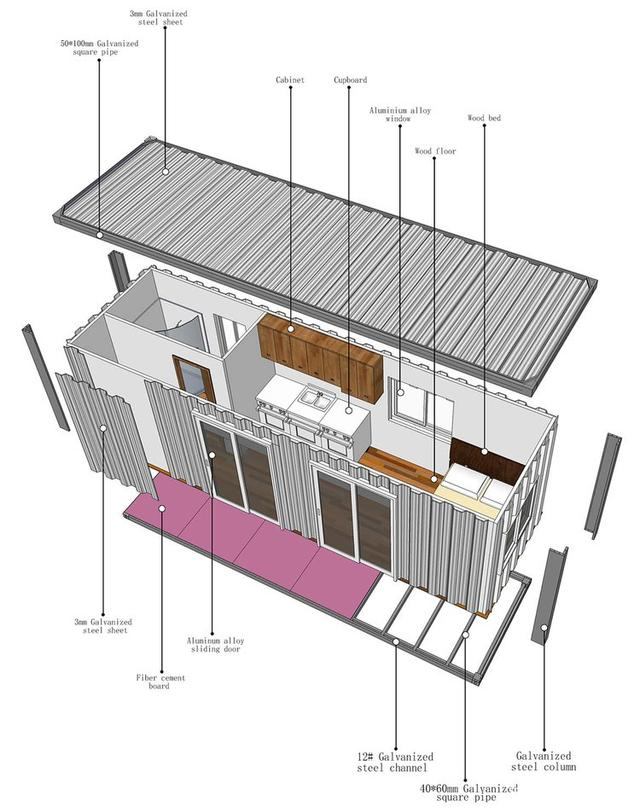
Content: Reinforcement treatment: Although the container itself has a certain structural strength, it may need to be reinforced when used as housing. Particularly in the case of multi-storey buildings or those subjected to large loads, the frames, corner posts and other parts of the container need to be strengthened. Steel, wood and other materials can be used for reinforcement to ensure the structural safety of the house.
Connection: The connection between containers directly affects the overall stability of the house. Common connection methods include welding, bolt connection, corner piece connection and so on. In the design, the appropriate connection method should be selected according to the actual situation, and ensure that the connection is firm and reliable. At the same time, it is also necessary to consider the waterproofing and heat insulation of the connection parts.
Space layout: due to the relatively small internal space of the container, a reasonable space layout is needed. Open design and multi-functional furniture can be used to improve the utilisation of space. At the same time, factors such as ventilation and lighting should be considered to create a comfortable living environment. For example, set up large windows and skylights to increase natural lighting and ventilation; use mezzanine space to set up storage rooms, attics, etc. to increase the use area.

Decoration materials: Choose environmentally friendly and durable decoration materials to meet the basic needs of sheltered housing. Materials such as wood, bamboo and environmentally friendly paints can be used for decoration to create a warm and comfortable living atmosphere. At the same time, attention should be paid to the fireproof performance of the decoration materials to ensure the safety of living.
Water and electricity supply: Containerised sheltered housing needs to be equipped with a perfect water and electricity supply system. In the design, the arrangement and connection of pipelines should be considered to ensure the stability and safety of water and electricity supply. Centralised water supply and power supply can be used for easy management and maintenance.
Sanitary facilities: according to the number of occupants and their needs, appropriate sanitary facilities, such as toilets and showers, should be equipped. It is necessary to ensure that the sanitary facilities are well ventilated and smoothly drained to improve the comfort of living.

Community facilities: In the containerised sheltered housing blocks, some community facilities, such as kindergartens, shops, fitness grounds, etc., can be set up to meet the daily life needs of the residents. At the same time, it is necessary to pay attention to the greening and landscape design of the community to create a good living environment. Lack of relevant standards: At present, China has no clear standards and norms for the construction of containers as security housing. This brings certain difficulties to the approval, design, construction and acceptance of the project. It is necessary to formulate relevant standards and norms to clarify the technical requirements, safety performance, environmental protection indexes, etc. of container housing, so as to provide a basis for the implementation of the project.
Land policy restrictions: The construction of containerised housing requires the occupation of certain land resources. In some areas, the land policy has strict restrictions on the construction of security housing, which may affect the implementation of the container housing project. Flexible land policies need to be developed to provide support for the construction of containerised sheltered housing. For example, unused land and temporary land can be used to build containerised housing to ease housing pressure. Conceptual change: Containers as housing are still relatively new in China, and public acceptance of them is relatively low. Some people may think that container housing is not comfortable and safe enough, and there is a certain prejudice. There is a need to strengthen publicity and education to improve public awareness and understanding of container housing and to change the traditional concept of housing.
Community integration: Containerised sheltered housing communities may face problems of integration with the surrounding community. As the appearance and style of container housing is different from that of traditional buildings, it may cause resentment among neighbouring residents. It is necessary to focus on the co-ordination and integration with the surrounding environment in the design and construction process to improve the overall quality of the community. At the same time, community management and services should be strengthened to promote communication and interaction among residents and enhance community cohesion.
